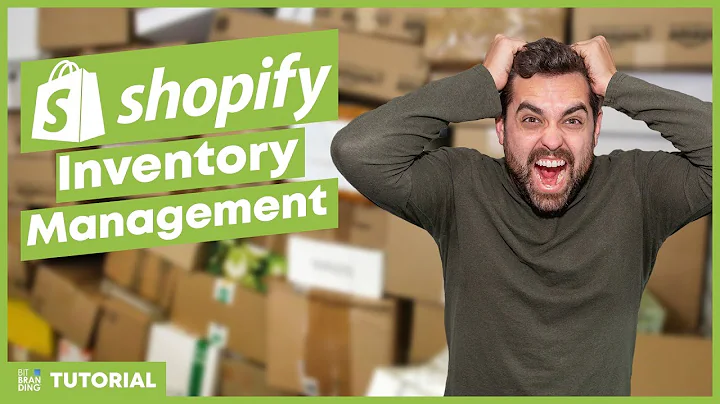Create Stunning Product Photos with a DIY Lightbox
Table of Contents
- Introduction
- The Importance of Good Product Photography
- What is a Lightbox?
- Benefits of Using a Lightbox for Product Photography
- How to Make Your Own Lightbox
- Materials Needed
- Step-by-Step Guide
- Tips for Taking Great Product Photos with a Lightbox
- Lighting
- Camera Settings
- Background and Props
- Editing Your Photos
- Conclusion
- Pros and Cons of Using a Lightbox
- Frequently Asked Questions
How to Make Your Own Lightbox
If you're an Etsy seller or any kind of online seller, you know how important it is to have great product photos. Good product photography can make the difference between making a sale and losing a potential customer. But taking great photos can be a challenge, especially if you don't have a lot of experience with photography. That's where a lightbox comes in.
What is a Lightbox?
A lightbox is a simple device that helps you take better product photos. It's essentially a box with white walls and a white bottom that diffuses light and eliminates shadows. By using a lightbox, you can create a consistent, professional-looking background for your product photos.
Benefits of Using a Lightbox for Product Photography
There are several benefits to using a lightbox for product photography. First and foremost, it helps you achieve consistent lighting in your photos. This is important because it ensures that your products look the same in every photo, which helps build trust with your customers. Additionally, a lightbox helps eliminate shadows, which can be distracting and make your photos look unprofessional.
How to Make Your Own Lightbox
Making your own lightbox is easy and inexpensive. Here's what you'll need:
Materials Needed
- A large cardboard box (the size will depend on what you're photographing)
- White tissue paper
- White poster board (matte or glossy)
- Box cutter or scissors
- Tape
Step-by-Step Guide
- Start by assembling your cardboard box, but leave the front part unattached.
- Cut out three sides of the box (the top and two sides), leaving about an inch and a half to two inches of an edge.
- Line the inside of the box with white tissue paper.
- Cut a piece of white poster board to fit the bottom of the box.
- Place your product on the poster board and position it in the box.
- Use a camera or smartphone to take your photo.
Tips for Taking Great Product Photos with a Lightbox
Now that you have your lightbox set up, it's time to start taking photos. Here are some tips to help you get the best results:
Lighting
- Use natural light if possible. Place your lightbox near a window to take advantage of natural light.
- If you're using artificial light, use a daylight bulb to ensure that your photos have a natural-looking color.
- Avoid using a flash, as it can create harsh shadows and make your photos look unprofessional.
Camera Settings
- Use the "Pro Mode" on your smartphone or camera to adjust the exposure, white balance, and other settings.
- Use a tripod or stabilizer to keep your camera steady and avoid blurry photos.
- Use a remote shutter release or timer to avoid camera shake.
Background and Props
- Use a plain white background to keep the focus on your product.
- Use props sparingly to add interest to your photos, but don't let them distract from your product.
- Experiment with different angles and compositions to find the best way to showcase your product.
Editing Your Photos
Once you've taken your photos, you may want to edit them to make them look even better. There are many photo editing tools available, from free apps to professional software. Some common edits include adjusting the brightness and contrast, cropping the photo, and removing any blemishes or distractions.
Conclusion
A lightbox is a simple and inexpensive tool that can help you take better product photos. By following these tips and using a lightbox, you can create professional-looking photos that will help you sell more products online.
Pros and Cons of Using a Lightbox
Pros:
- Consistent lighting
- Eliminates shadows
- Inexpensive
- Easy to make
Cons:
- Can be bulky and take up space
- May not work for all types of products
- Requires some setup time
Frequently Asked Questions
Q: Can I use a lightbox for other types of photography?
A: Yes, a lightbox can be used for any type of photography where you want a consistent, neutral background.
Q: Do I need a professional camera to use a lightbox?
A: No, you can use a smartphone or any camera with manual settings to take photos with a lightbox.
Q: Can I use a different color background in my lightbox?
A: Yes, you can use any color background you like, but white is recommended for product photography because it creates a neutral, professional-looking background.
Q: How do I clean my lightbox?
A: You can clean your lightbox with a damp cloth or paper towel. Be careful not to get the tissue paper too wet, as it can tear easily.
Q: Can I use a lightbox for outdoor photography?
A: Yes, a lightbox can be used outdoors, but you may need to use artificial lighting to achieve consistent results.






















